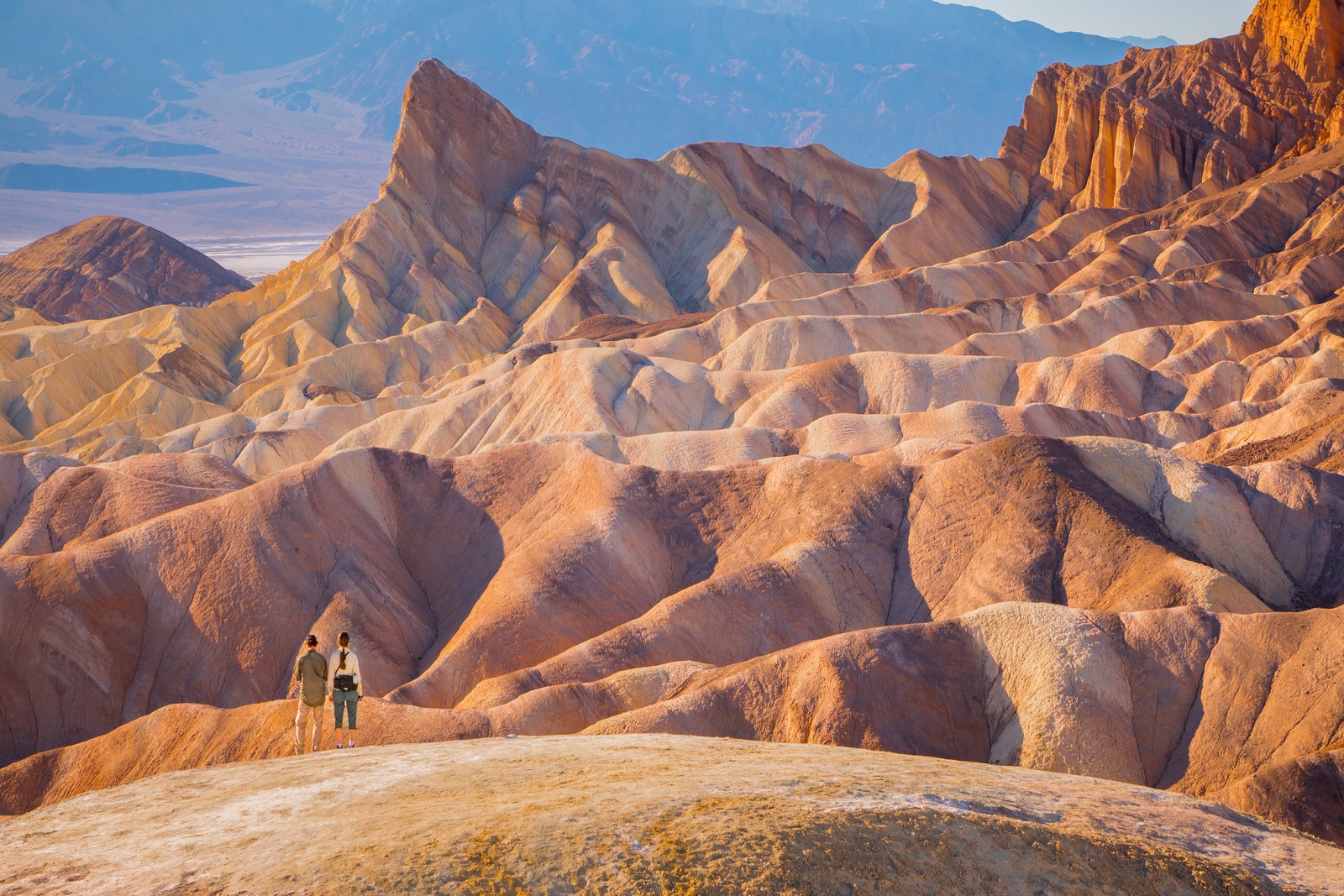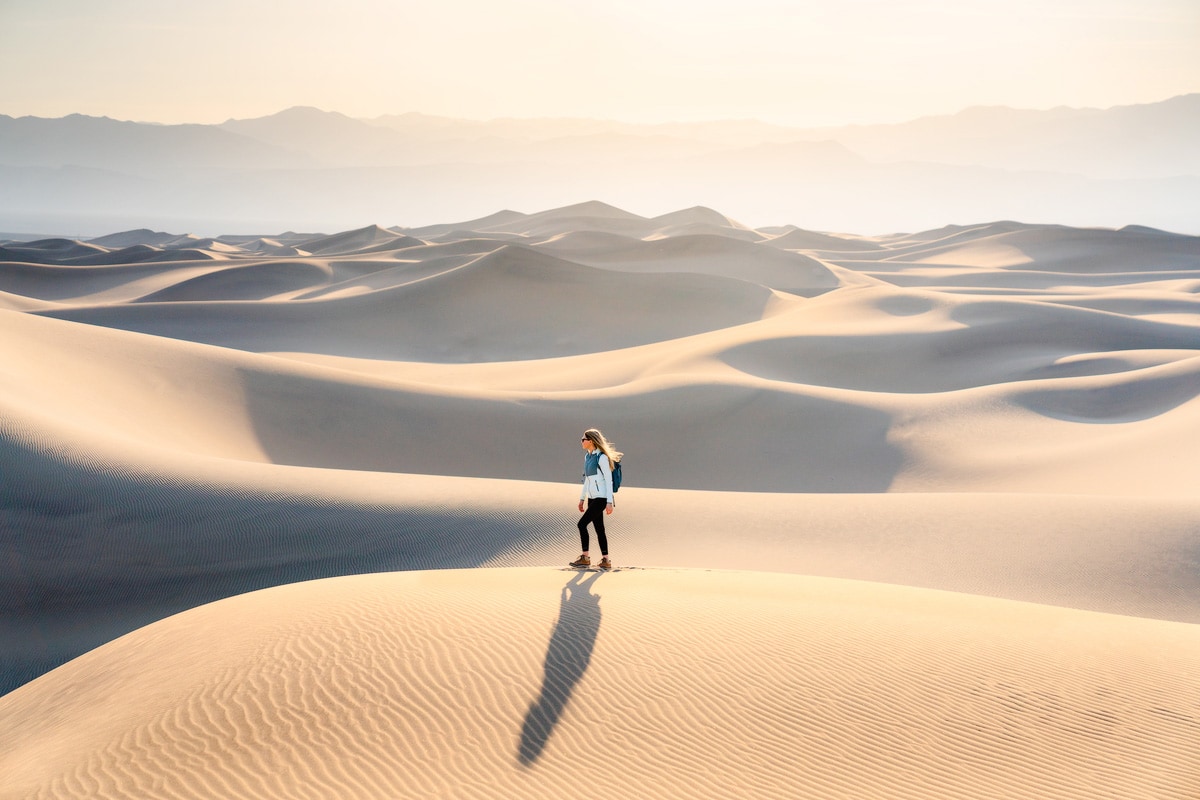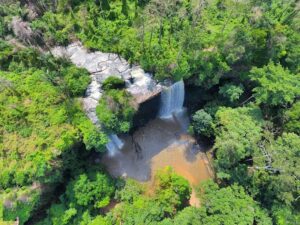
death-valley-national-park-
Death Valley, located in Eastern California, is a place of paradoxes and extremes. Known for its scorching temperatures and desolate landscapes, it also harbors a unique and stark beauty that captivates those who visit.
Among its many remarkable features, one stands out as both a geographical and symbolic low point: Badwater Basin, which sits at 282 feet below sea level, making it the lowest point in North America.
The Geology of Extremes
Death Valley’s dramatic landscape is a result of millions of years of geological activity. The valley is a graben, a block of Earth’s crust that has dropped down between faults, creating a deep and elongated basin. This geological depression contributes to the valley’s extreme heat as it traps hot air and sunlight, making it one of the hottest places on Earth.

Read also The Beauty of Niagara Falls
Badwater Basin: The Lowest Point
Badwater Basin is a salt flat, a remnant of ancient Lake Manly, which evaporated thousands of years ago. The basin’s salt crust, shaped by seasonal rains and evaporation, creates a mosaic of hexagonal salt polygons that stretch as far as the eye can see. Walking across this vast, blindingly white expanse, one can feel the eerie silence and isolation that define Death Valley.
Flora and Fauna: Life in the Extremes
Despite its harsh conditions, Death Valley is teeming with life adapted to its extreme environment. Unique plant species such as the creosote bush, desert holly, and mesquite thrive in the arid soil. The valley is also home to resilient wildlife, including bighorn sheep, coyotes, and the elusive desert tortoise. Spring rains can transform the valley floor into a colourful tapestry of wildflowers, a fleeting but breathtaking spectacle.

The Moving Rocks of Racetrack Playa
One of Death Valley’s most intriguing mysteries lies in Racetrack Playa, where rocks appear to move across the dry lake bed, leaving long trails behind them. This phenomenon puzzled scientists for decades until it was discovered that a combination of winter ice, water, and wind creates the conditions for these rocks to slide across the playa. This natural oddity adds to the valley’s allure and sense of wonder.
Human History and Cultural Significance
Death Valley has been home to the Timbisha Shoshone people for centuries, who have adapted to and thrived in this harsh environment. The valley also played a role during the California Gold Rush, when pioneers crossed it in search of fortune, often with deadly consequences. The name “Death Valley” was coined by a group of pioneers known as the ’49ers, who were part of the California Gold Rush in 1849. These pioneers attempted to cross the valley in search of a shortcut to the goldfields of California. They faced extreme hardships, including intense heat, arid conditions, and a lack of water, which led them to believe they would die in the valley. Despite their dire circumstances, most of the group survived. One of the survivors reportedly named the area “Death Valley,” reflecting the harrowing experience they endured.
Tourism and Conservation
Today, Death Valley National Park attracts visitors from around the world, drawn by its unique landscapes and the challenge of experiencing one of the planet’s most extreme environments. Key attractions include Zabriskie Point, with its stunning views of golden badlands, and Dante’s View, offering panoramic vistas of the valley below.
Efforts to preserve this fragile ecosystem are crucial, as climate change and human activity pose threats to its delicate balance. The National Park Service works to protect the natural and cultural resources of Death Valley, ensuring that future generations can experience its stark beauty and uncover its secrets.
Key Features and Facts:
- Temperature:
- Death Valley holds the record for the highest air temperature ever recorded on Earth: 134°F (56.7°C) on July 10, 1913, at Furnace Creek.
- During the summer, temperatures regularly exceed 120°F (49°C).
- Geography:
- It is the lowest point in North America, with Badwater Basin sitting at 282 feet (86 meters) below sea level.
- The valley is about 140 miles (225 kilometers) long and ranges from 5 to 15 miles (8 to 24 kilometers) wide.
- Geology:
- The landscape includes salt flats, sand dunes, badlands, valleys, canyons, and mountains.
- The valley is a graben, a block of the Earth’s crust that has dropped down between faults.
- Climate:
- It has an arid desert climate with less than 2 inches (50 mm) of rainfall annually.
- Winter temperatures are mild, but summer temperatures are extremely high, making it inhospitable during the warmer months.
- Flora and Fauna:
- Despite its harsh conditions, Death Valley is home to diverse wildlife, including coyotes, bighorn sheep, and several species of lizards and birds.
- Unique plant species like the creosote bush, desert holly, and mesquite thrive in this environment.
- Cultural and Historical Significance:
- The Timbisha Shoshone people have lived in the valley for centuries.
- During the California Gold Rush, pioneers passing through the valley gave it its ominous name.
- Tourism:
- Death Valley National Park, established in 1994, attracts visitors interested in its stark and dramatic landscapes.
- Key attractions include Zabriskie Point, Dante’s View, Mesquite Flat Sand Dunes, and the Racetrack Playa, known for its moving rocks.
- Extreme Events:
- Flash floods can occur, transforming the landscape rapidly and dramatically.
- It experiences frequent seismic activity due to its tectonic setting.
Conclusion
Death Valley, with its below-sea-level depths and otherworldly landscapes, is a place of stark beauty and fascinating secrets. From the salt flats of Badwater Basin to the mysterious moving rocks of Racetrack Playa, it is a testament to nature’s power and resilience. Exploring Death Valley is an adventure into the extremes of our planet, offering a unique glimpse into a world where life persists against all odds.
For advertising and content publication, contact Xylose Magazine via WhatsApp on 0574170347







